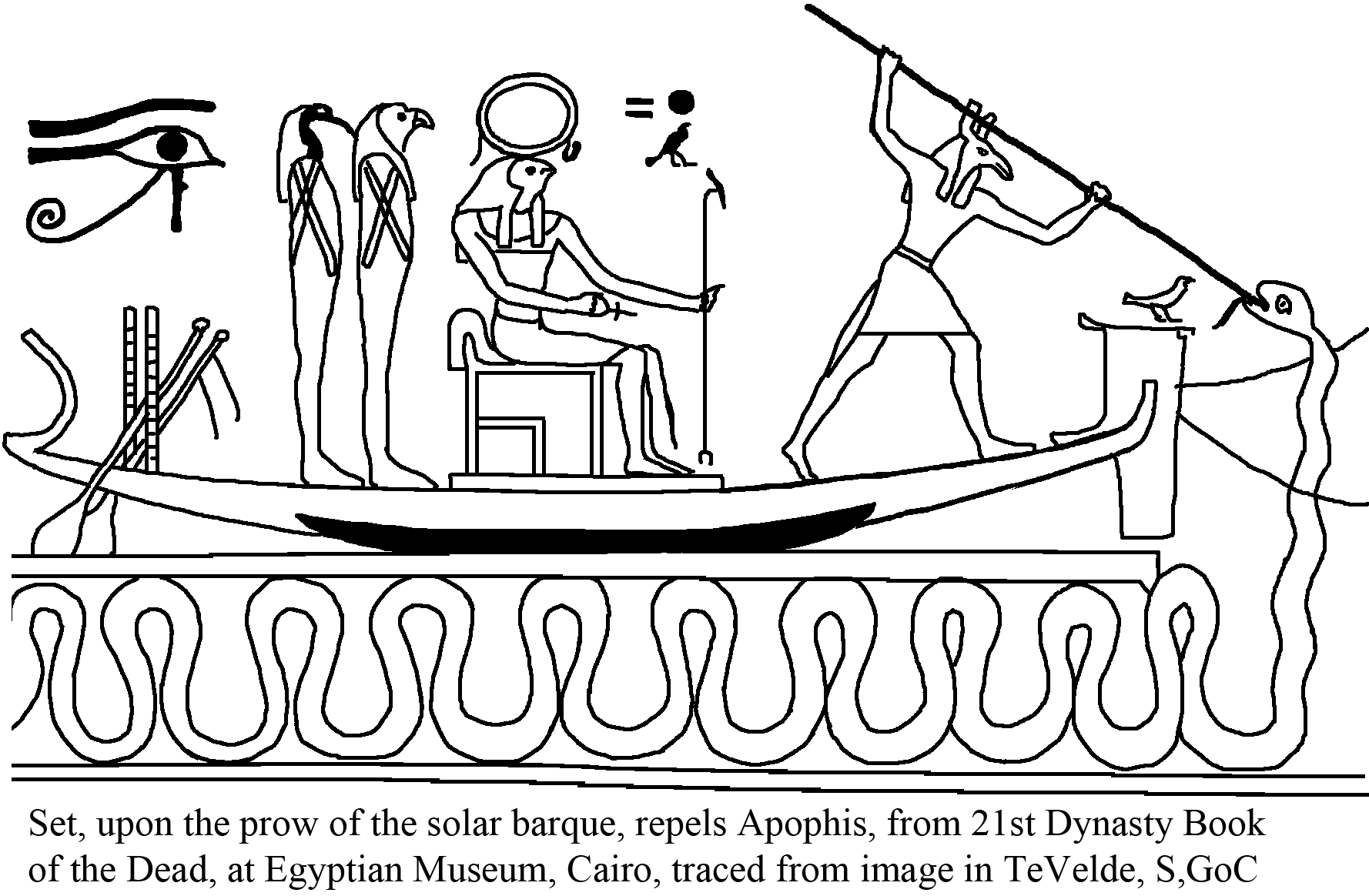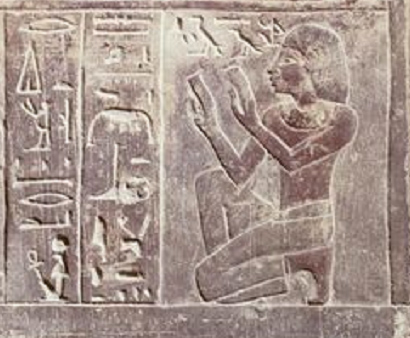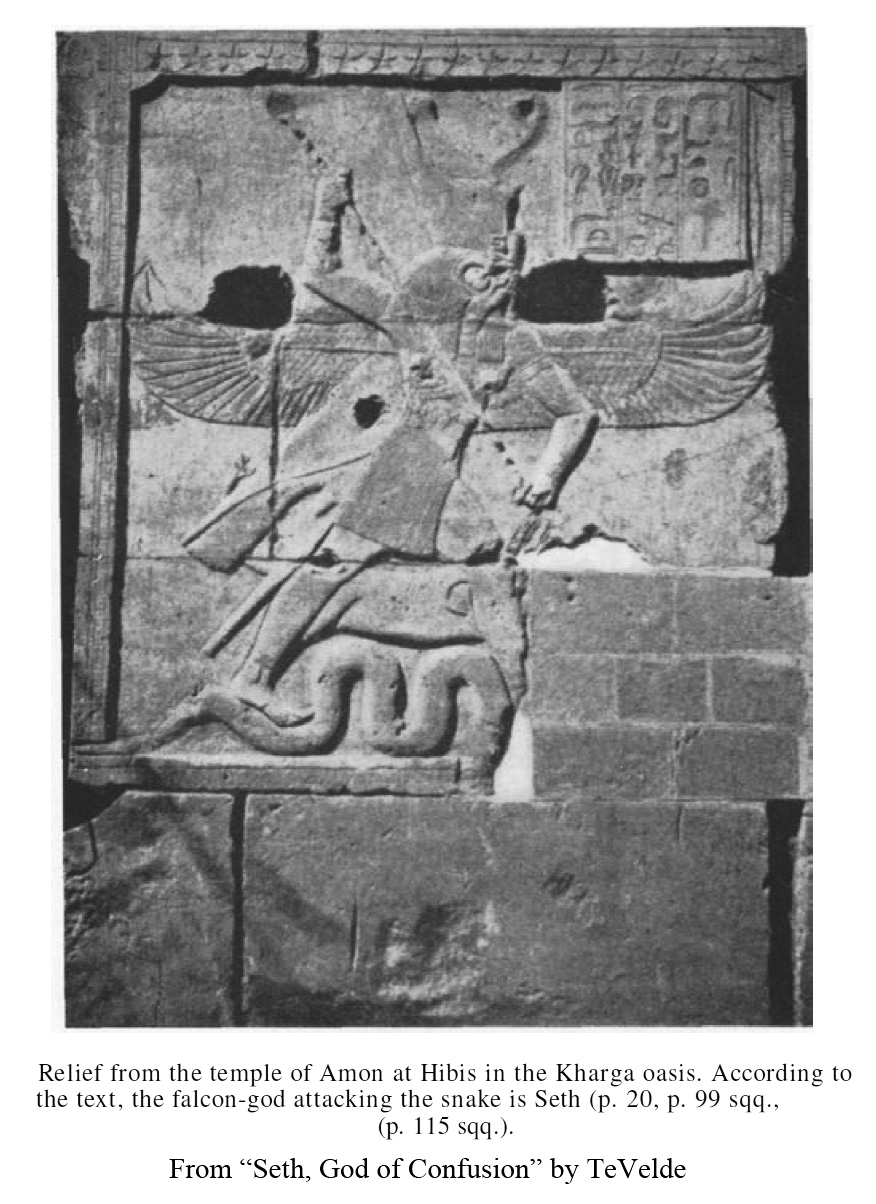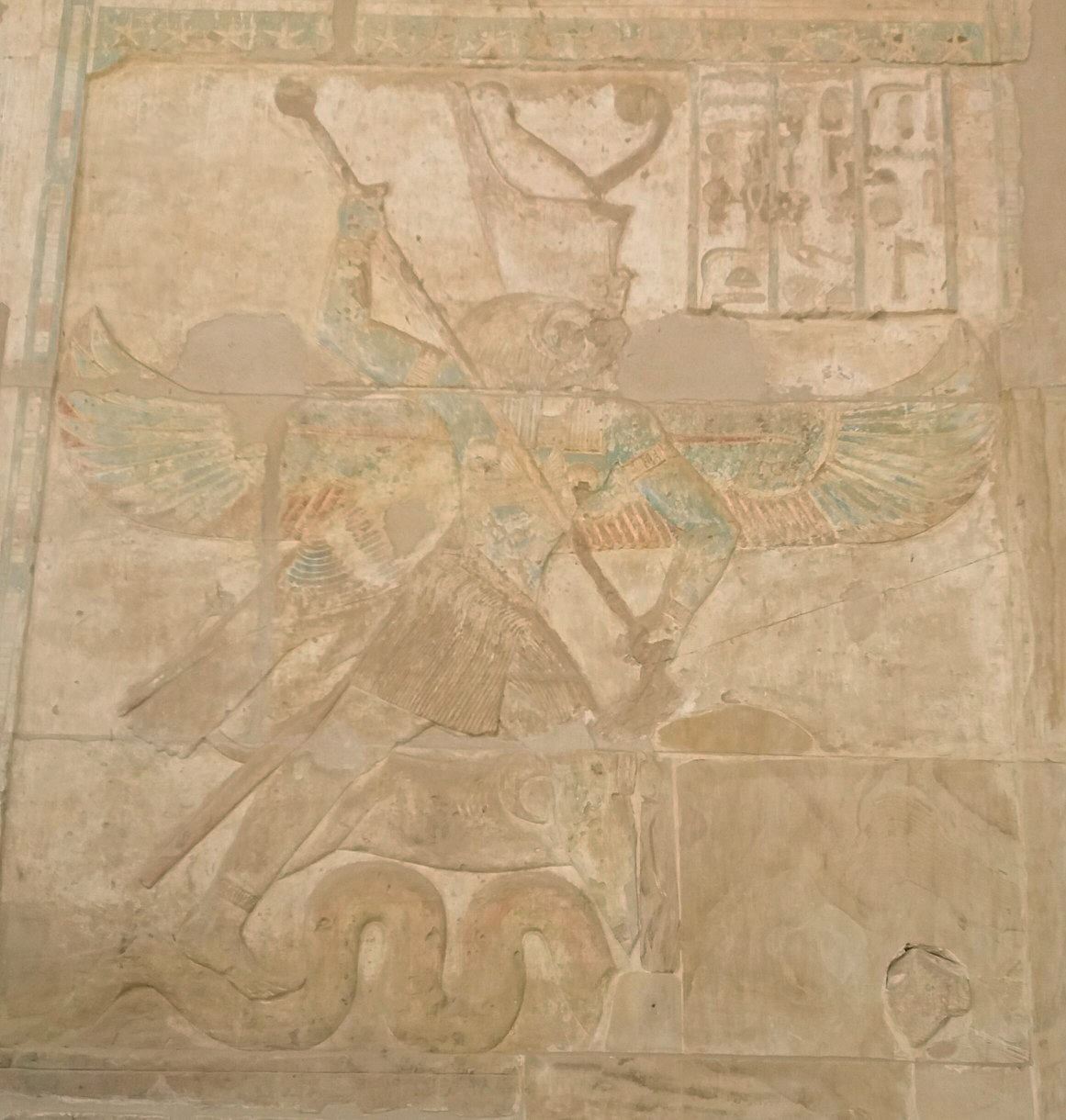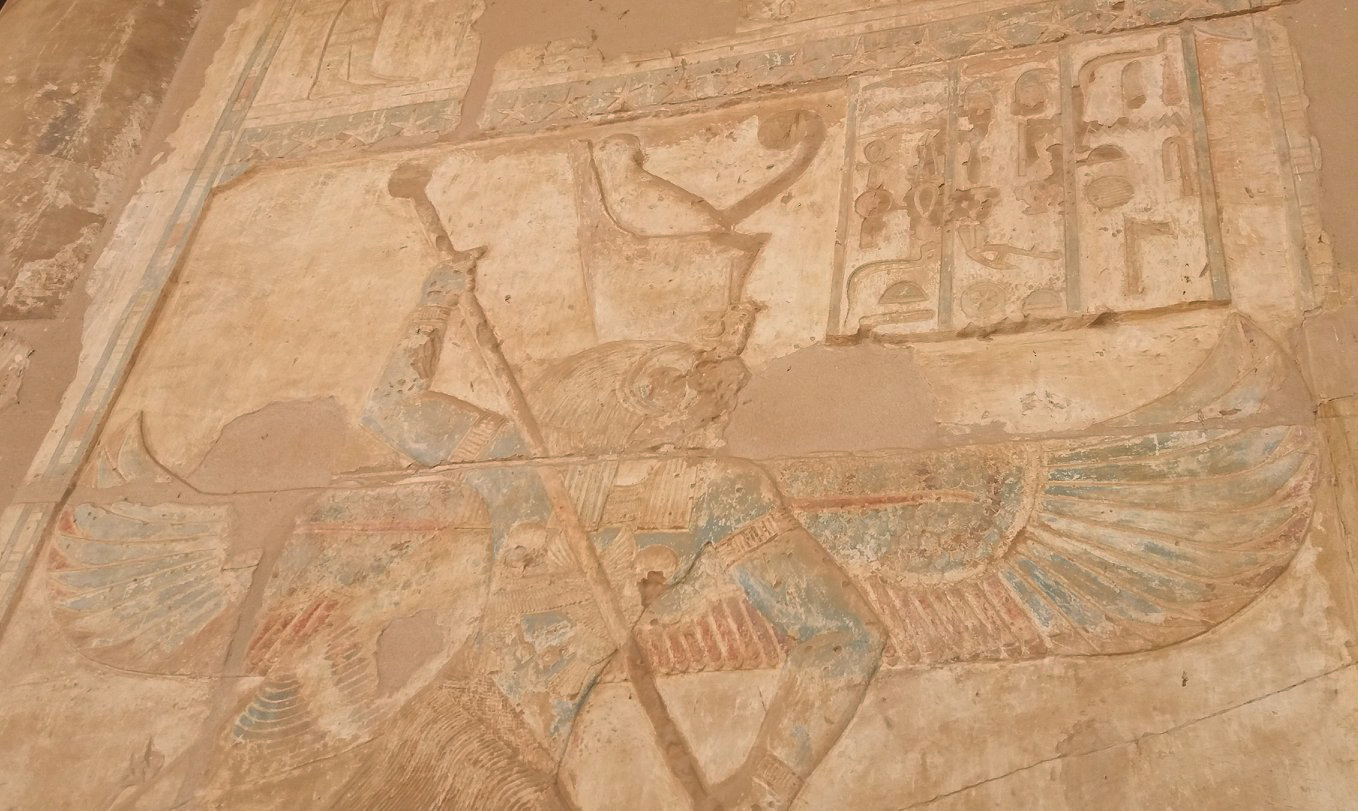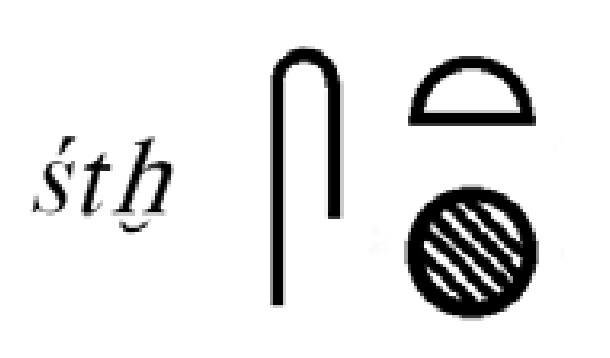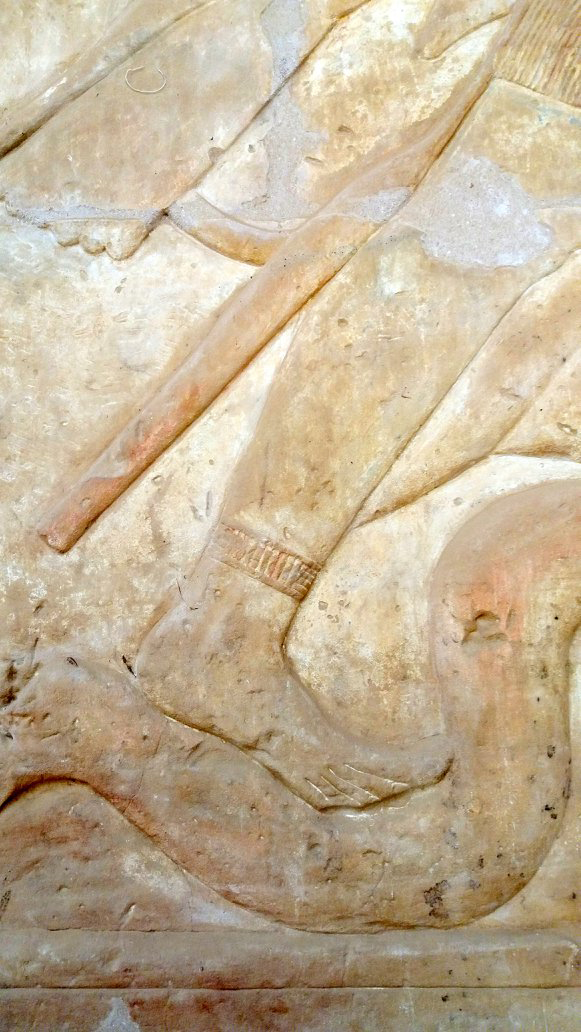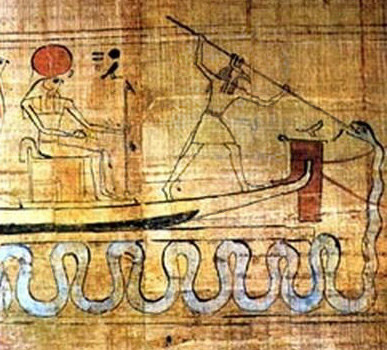
21st Dynasty Book of the Dead, Egyptian Museum, Cairo
|
I am not certain where I found that color version, but I found another version in print, in the KMT magazine,
VOLUME 15, NO. 4, Winter 2004-05, in the article "Set, Lord of Chaos", which explains that it from a 21th Dynasty Book of the Dead. And there is a much larger grayscale version (from which I traced for the linear version) which shows the entire scenario in TeVelde's _Seth, God of Confusion: |
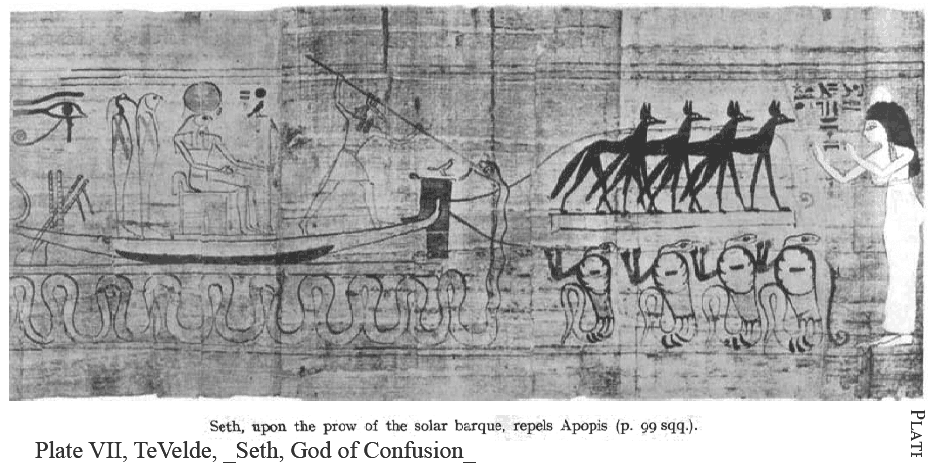
VII: A. Piankoff, N. Rambova, Mythological papyri, New York, 1957, Plates volume, pl. 2.
21st Dynasty Book of the Dead, Egyptian Museum, Cairo
|
A spell from the Book of the Dead quoted by Sherine M. ElSebaie in her Masters Thesis describes the scene:
"As for the mountain of Bakhu on which the sky rests, it is in the east of
the sky (...). A serpent is on the top of that mountain; it is thirty cubits long.
eight cubits of its forepart are of flint, and its teeth gleam.( ...) Now after a
while he will turn his eye against Re, and a stoppage will occur in the
Sacred Bark and a great vision among the crew, for he will swallow up
seven cubits of the great waters; Seth will project a lance of iron
against him and will make him vomit up al1 that he has swallowed.(85)"117
This serpent, uncreated, always existing, has only one desire, to return everything in creation to a state of non-existence. Set, 'great of strength', is able to wield the heavy lance against him and assure the safe passage of Ra and all those on the Bark. (See the books of Erik Hornung to learn more about Apep (aka Apophis)).
|

Linear version in _Symbol and the Symbolic_, page 81.
|
R.A. Schwaller de Lubicz gives a different version of this passage, in which the serpent is quite a bit bigger: "At about noon, the barque of Re-Horakhty reachs the summit of a mountain where a serpent 50 cubits (26 meters) in length is found whose foremost 3 cubits are of silex. This serpent swallows in one gulp part of the stream. Seth, at the front of the boat, 'directs his lance of fire against him, and causes him to cough up all that he had swallowed.'(_Book of the Dead_, Chapter 108, quoted in _Symbol and the Symbolic_, page 81. Lance of iron or lance of fire? In the following stela, seen in TeVelde's book and in color via GEM website, Set is spearing an Apep (Apophis) with hands and a human face (Set also has a human face, rather than the usual snout and ears):
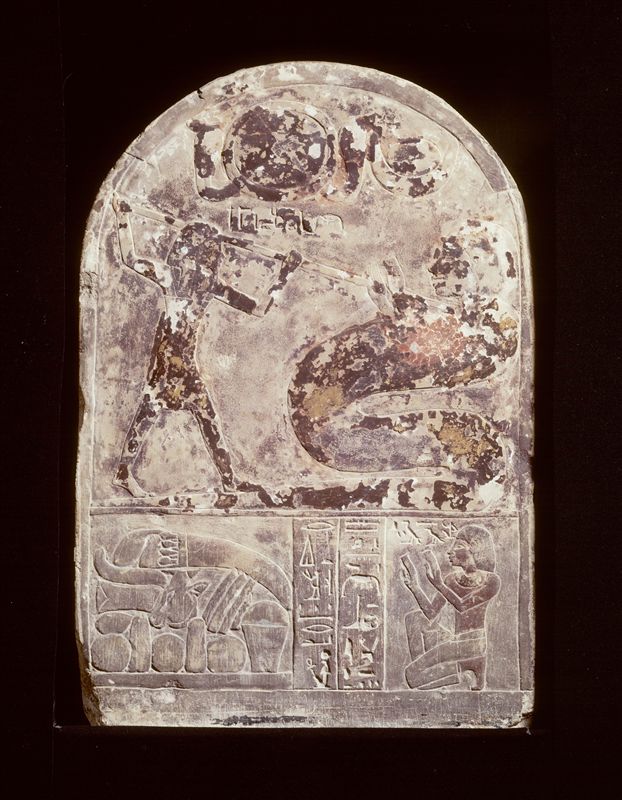 Stele of Taqayna RIJKSMUSEUM VAN OUDHEDEN [06/001], AP 60 International Inventory #06/001/14069 LIMESTONE, 41.5cm tall, 29cm wide Aquisition date 1828, "This object originates from the collection of the Greek diplomat Giovanni d'Anastasi."
|

Description from Griffith Institute pdf:
|
"Round-topped stela, Nubti (Seth) spearing human-headed Apophis serpent, and
below, Teken [] kneeling in adoration before offerings, with hymn
to Re and Nubti (Seth), Dyn. XVIII, in Leiden, Rijksmuseum van Oudheden, Inv.
AP.60."
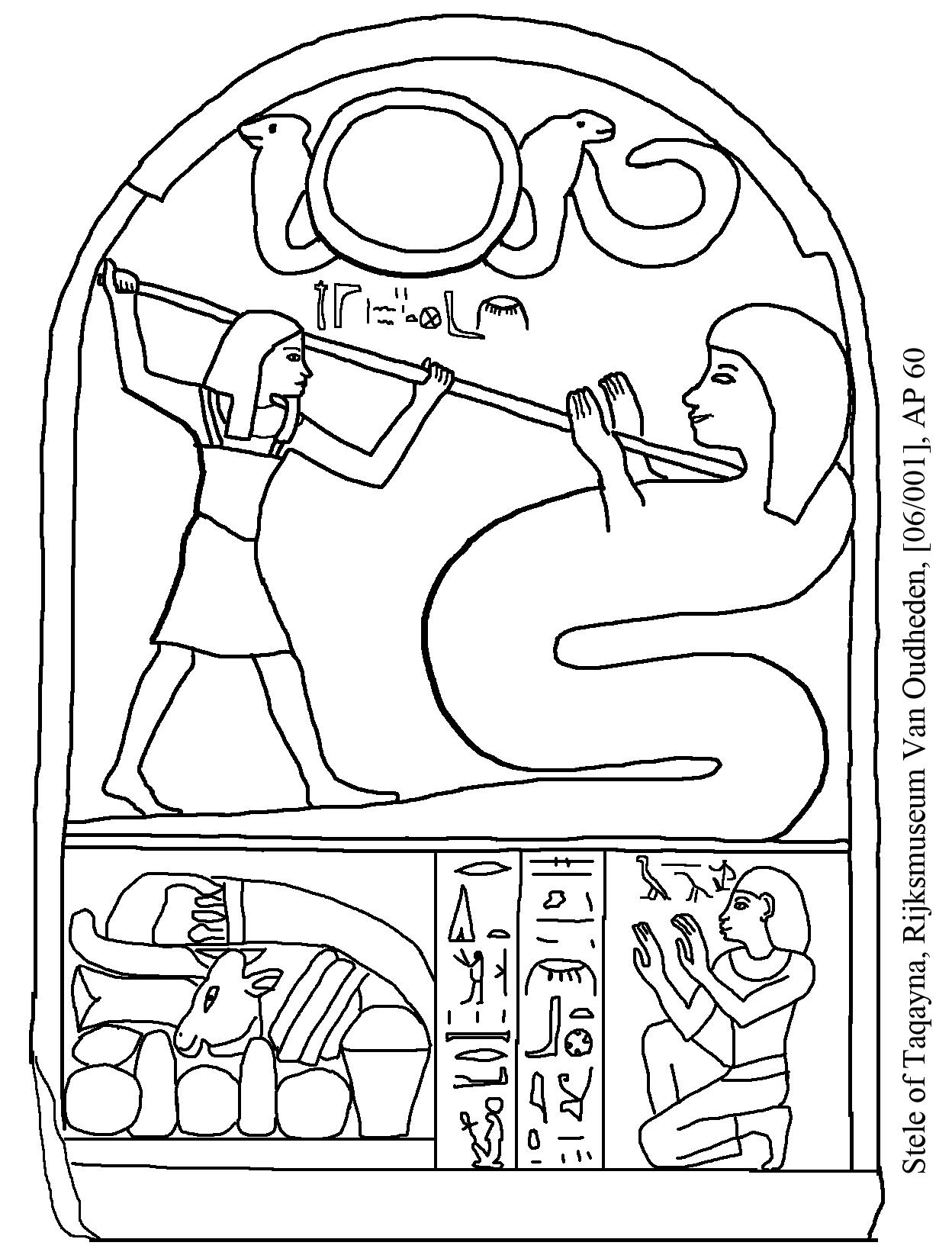
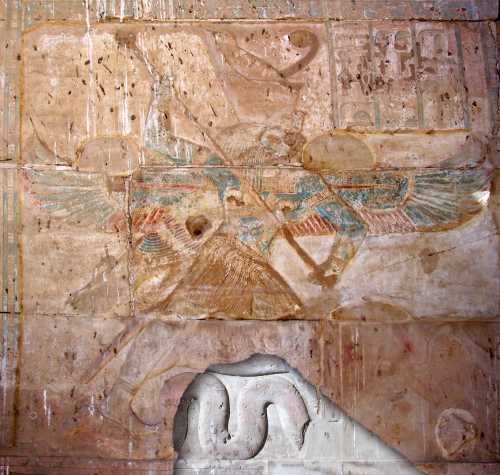 © Alain Guilleux , Une promenade en Egypte
"In the Kharga oasis as well, in the court of the Amun temple of Hibis, "Seth, great of strength, the great god, residing in Hibis,' is represented in a large relief, sprearing the Apophis serpent."_Religion in Roman Egypt: Assimilation and Resistance_ by David Frankfurter, page 113 TeVelde says further of Set: "He is imagined as standing on the prow of the sun barque and conquering the monster of chaos by word or deed and in this quality he is invoked and adored: |
|
"Hail to you, O Seth, son of Nut, the great of strength in the barque of millions, felling the enemy, the snake, at the prow of the barque of Re, great of battle-cry, may you give me a good lifetime..."2). "O Seth, lord of life, who is upon the prow of the barque of Re, save me from all evil clamour of this year."3) "A royal offering to Seth of Ombos, the son of Nut, the mighty one on the prow of the ship and to all the gods in Ombos."4)
2)Four Hundred Years-stela. Cf K. Sethe, Der Denkstein mit dem Datum des Jahres 400 der Ära von Tanis, ZÄS 65 (1930), p. 87 |
| Here are a couple other Apep slaying related scenes. In Ramesses IX tomb in the Valley of the Kings, KV 6, Ramesses IX is rejoicing. And why is he rejoicing? Because Set is at the helm of the barque and he knows he will sail safely, without worry about Apep. |

Traced from a photo in “Creation on the Potter's Wheel at the Eastern Horizon of Heaven” by Peter F. Dorman
in Gold of Praise: Studies on Ancient Egypt in Honor of Edward F. Wente, (Oriental Institute of Chicago 1999), pg. 88.
| Even in Ptolemaic period imagery, Set is wearing the canine face and reliably dealing with Apep. The Temple of Edfu has a charming image in which Set appears magically in two places, to do war on the evil snake: |
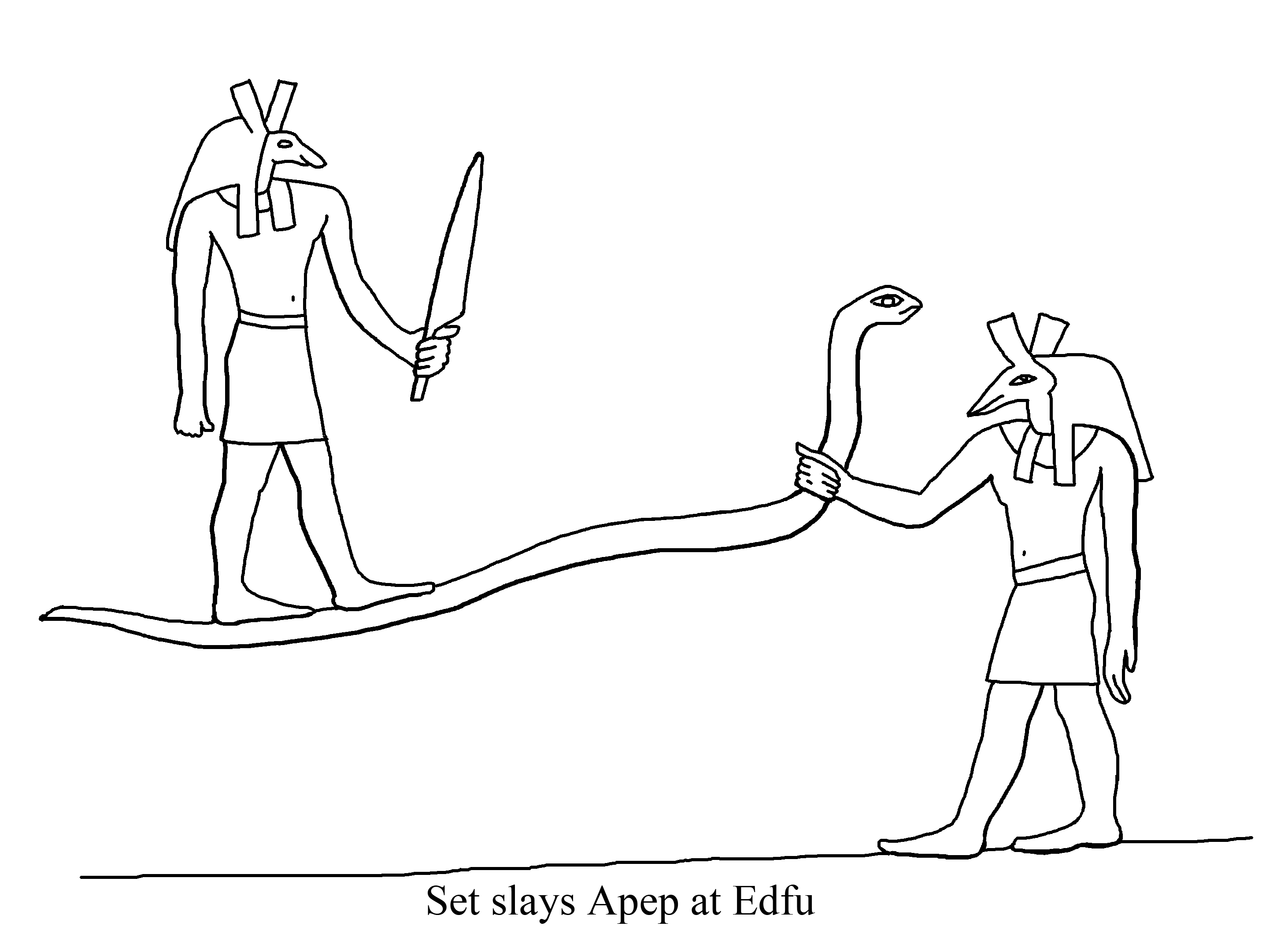
Traced from a photo by Jennifer Wheatley



